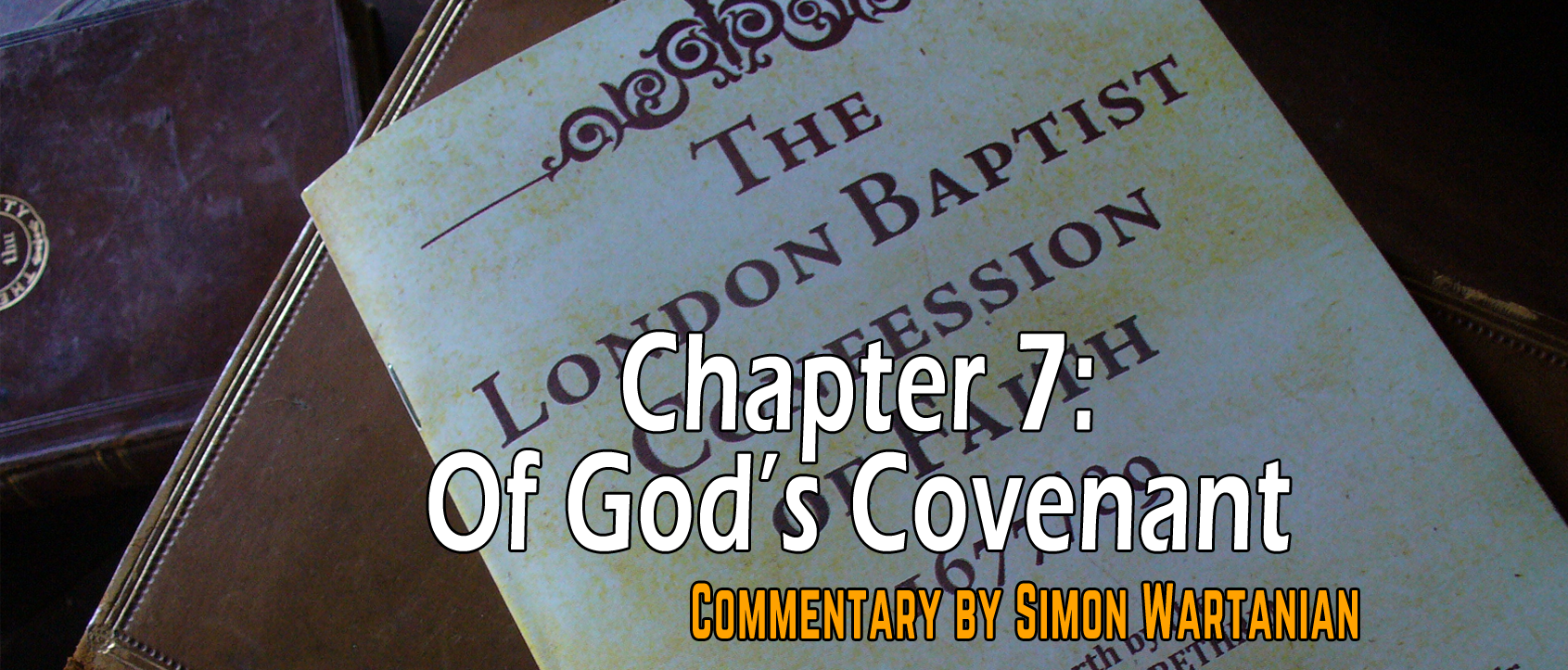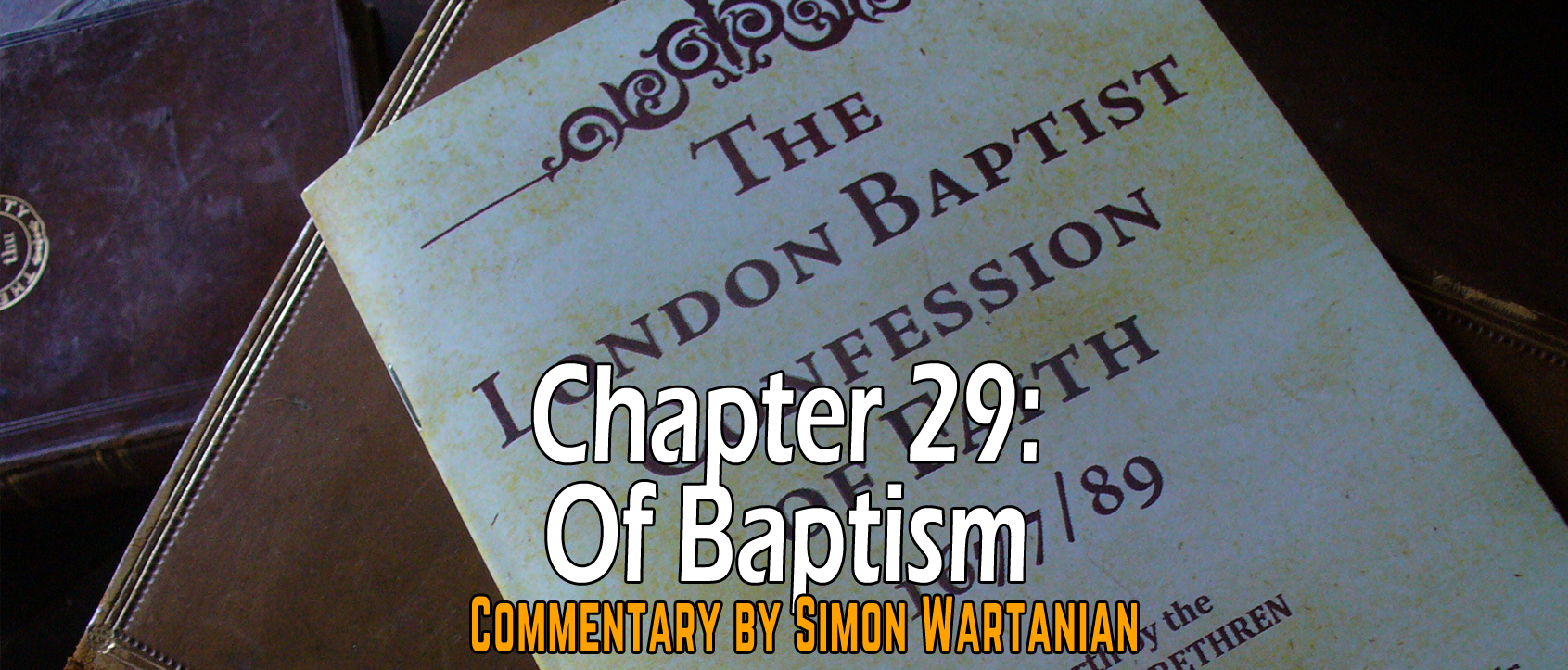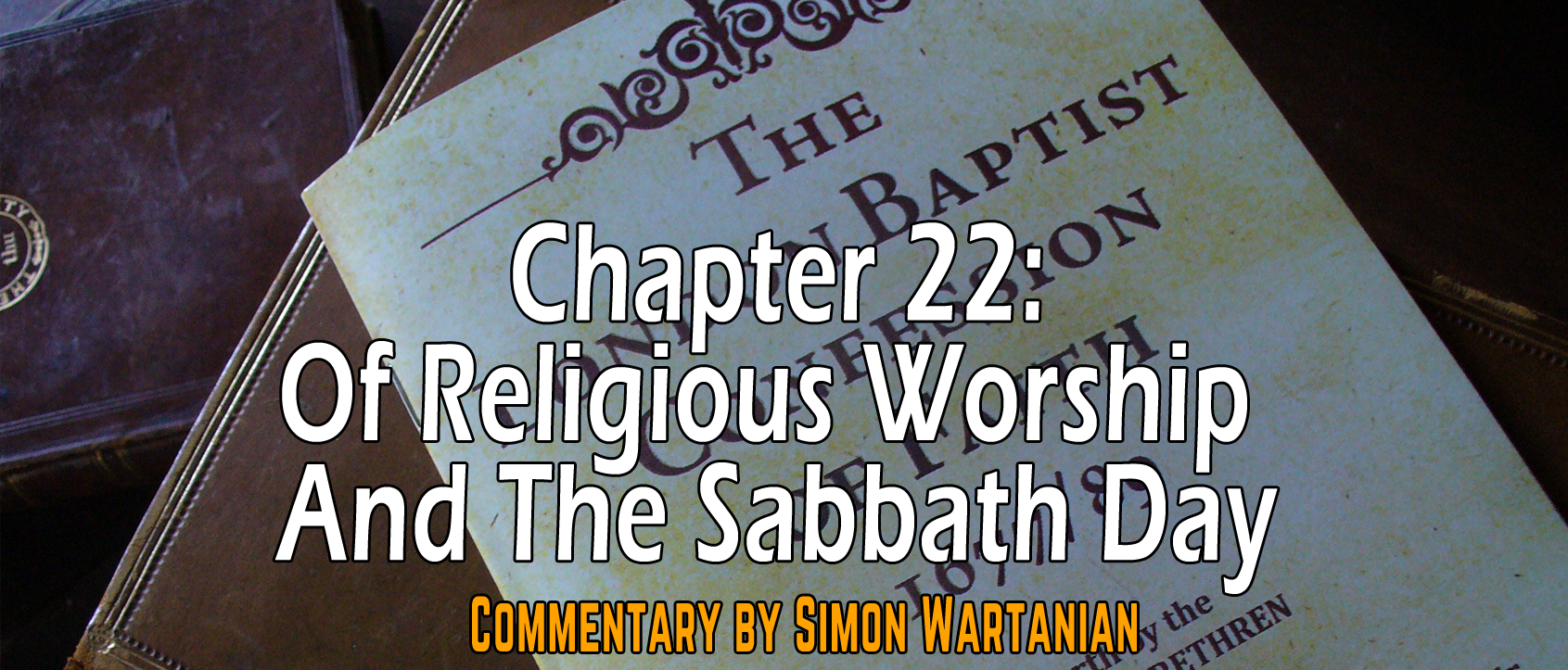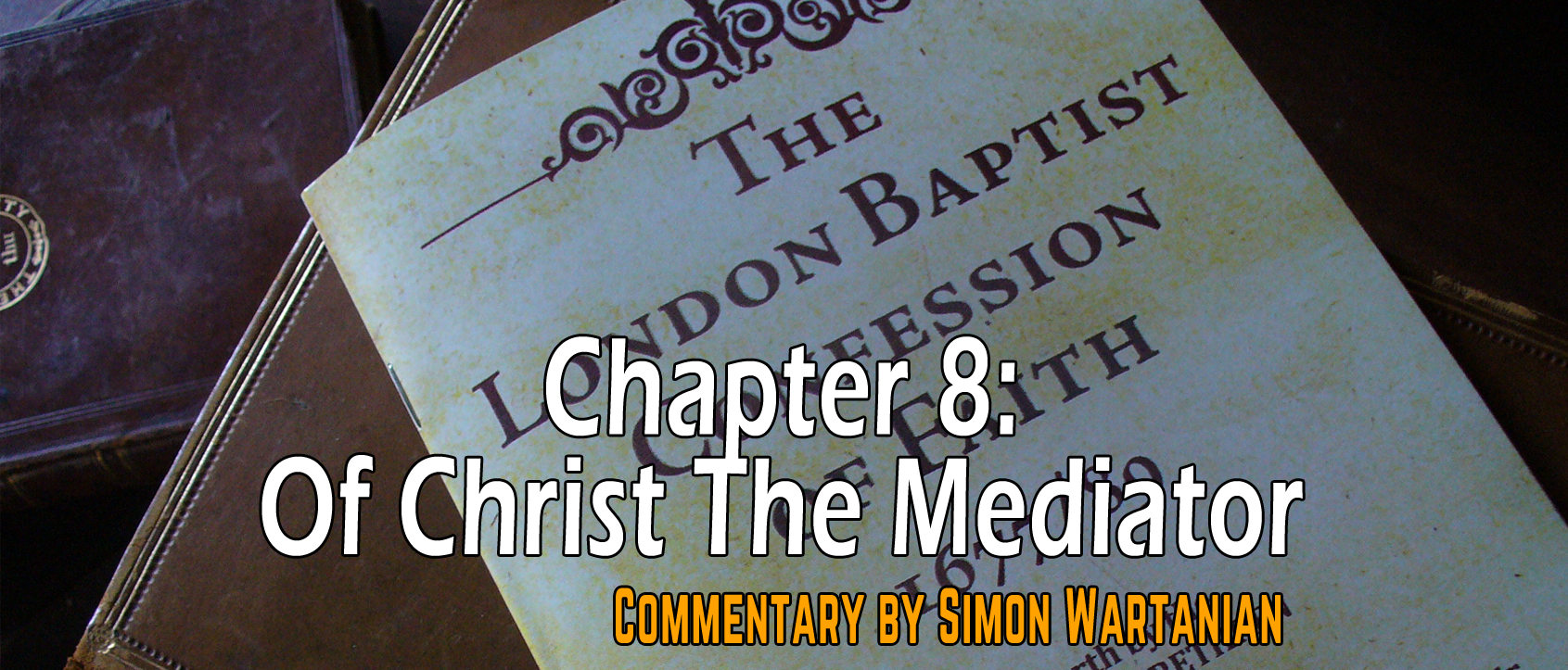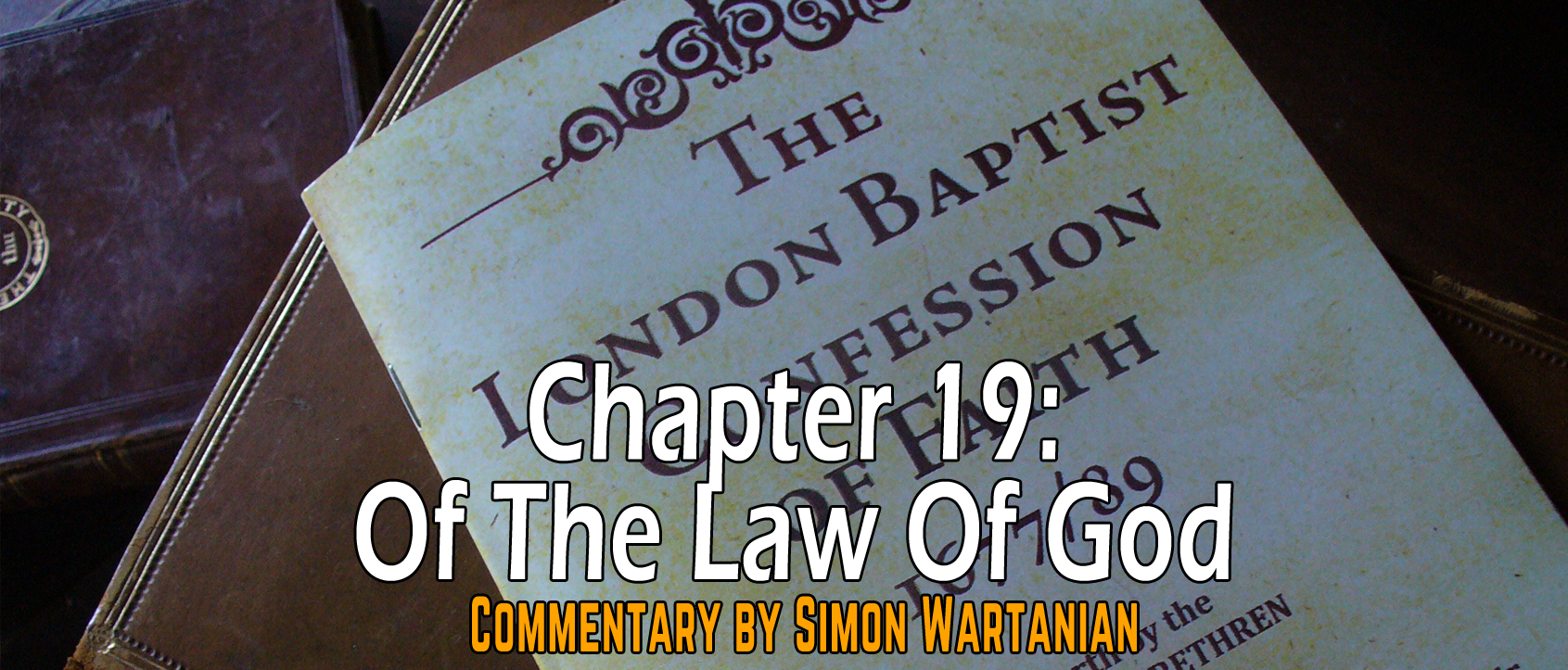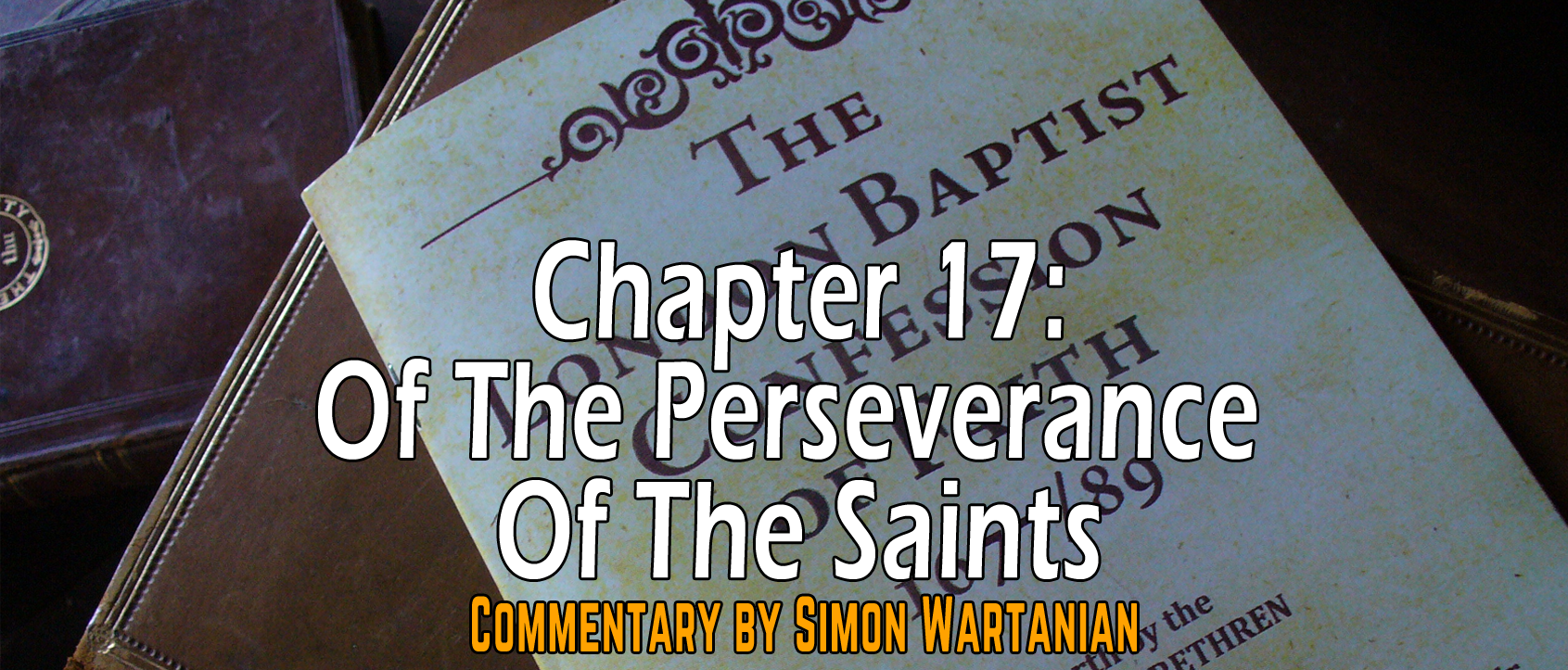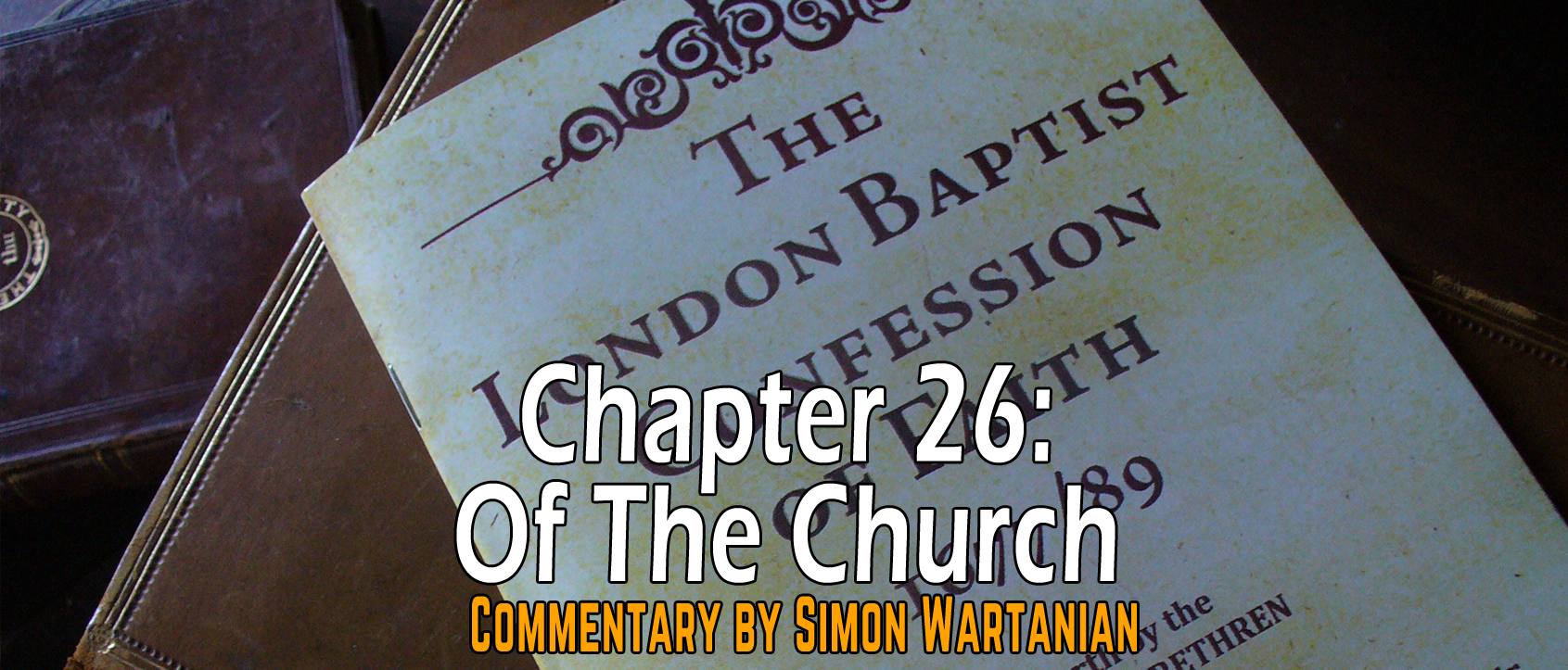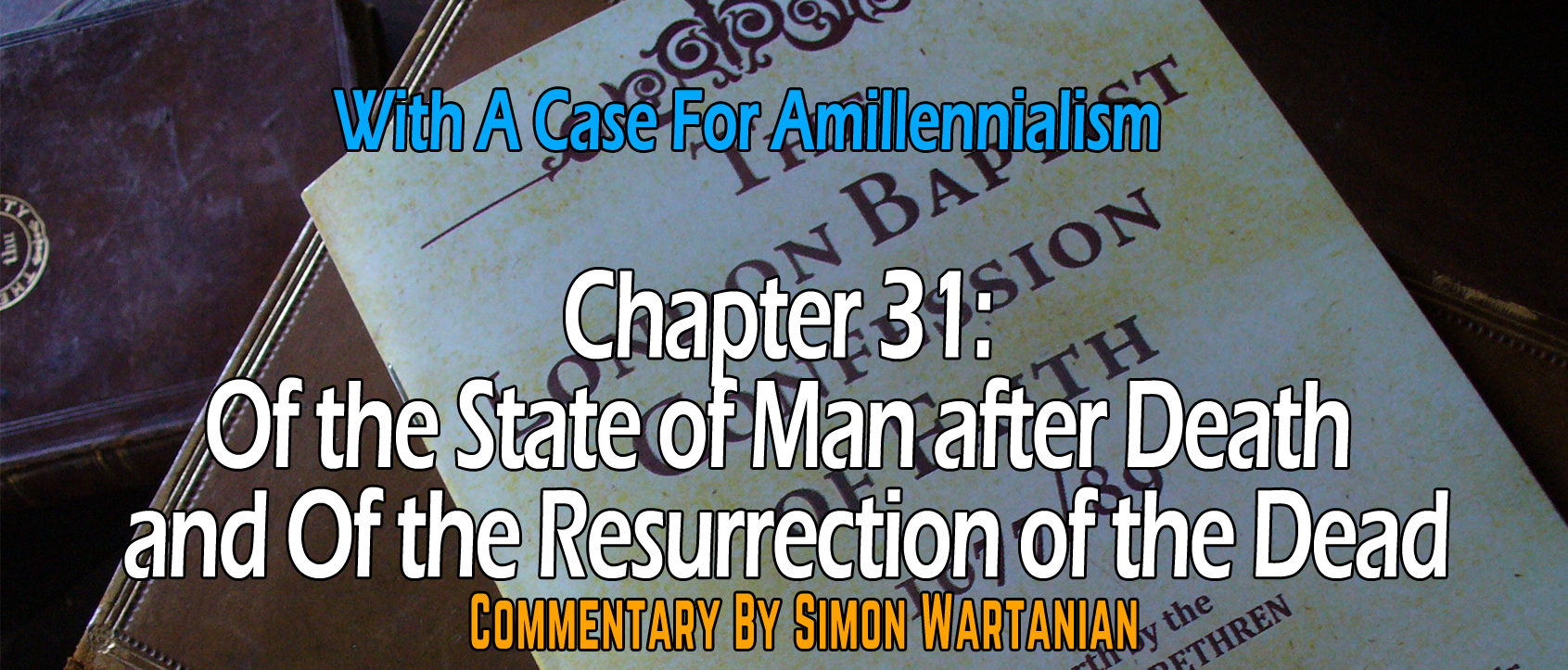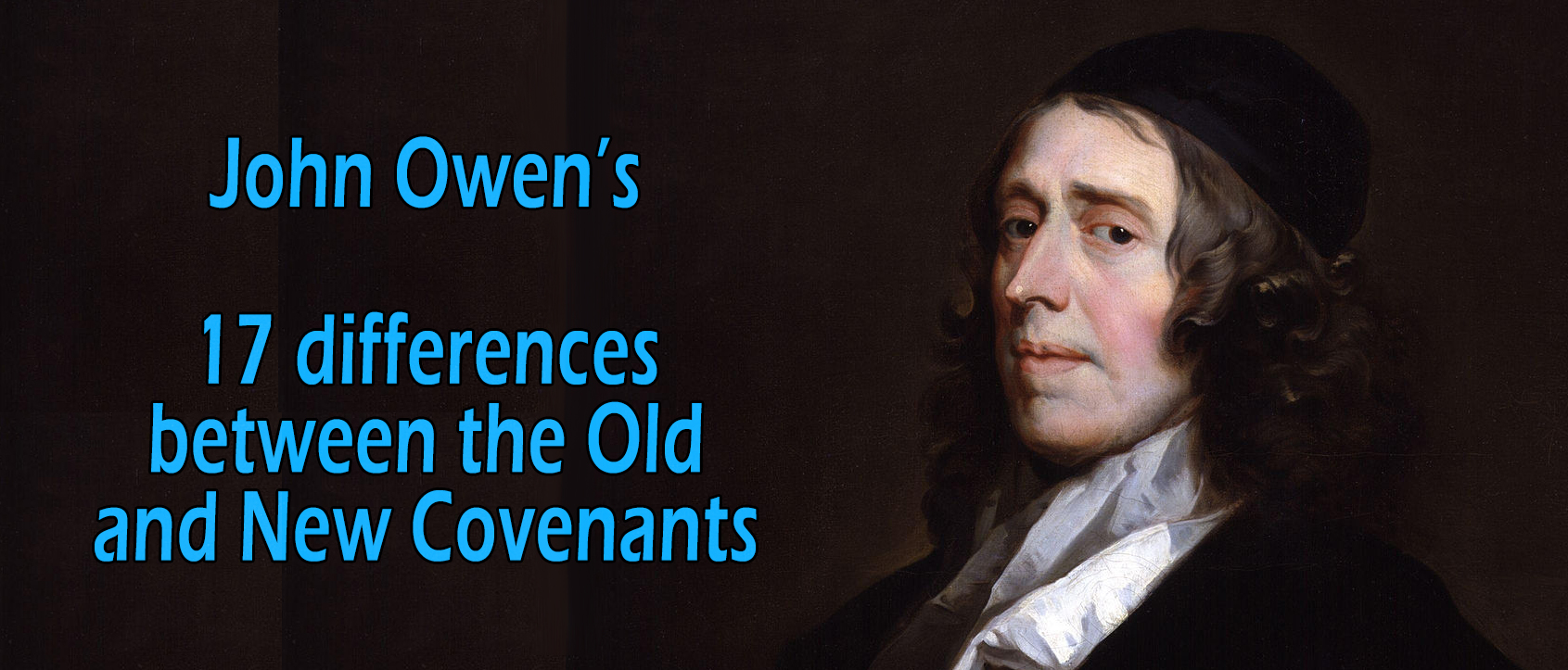Search
You searched for 'New Covenant'
I've found 35 results!
The elect were united with Christ in His death and they were buried with their Covenantal Head, but also raised together with Him. In contrast to Jewish circumcision of the flesh, Christians still have a circumcision, namely, that of the heart (Deut. 10:16; 30:6; Jer. 4:4; Rom. 2:28-29; Phil. 3:3). Circumcision continues in the New Covenant, yet it is not of the flesh but of the heart, which is regeneration. This passage is often claimed by our paedobaptist brethren to teach that the sign or seal of the New Covenant is baptism because they see a connection here between circumcision of the foreskin and Christian baptism. But I believe that Paul has another counterpart to the Old Covenant circumcision. The language of circumcision stays the same, but the object of circumcision and its spiritual significance are changed in the New Covenant. The sign of the Old Covenant was circumcision of the males, but in the New Covenant, there is a “circumcision made without hands” by Christ for every member of the New Covenant, male and female. The apostle is not equating circumcision and baptism here, but circumcision of the flesh and circumcision of the heart. In the Old Covenant, anyone who did not have the sign thereof did not belong to the covenant. In the New Covenant, anyone who is not circumcised in heart (which is not a sign of the New Covenant, because a sign has to be visible, see below on Signs And Seal), does not belong to the New Covenant. Circumcision functions as the prerequisite for membership in both covenants. Thus, the type and anti-type relationship here is not between Old Covenant circumcision of the foreskin and Christian baptism. Rather, it is between circumcision of the foreskin and circumcision of the heart, which is the regeneration promised to be an essential aspect of the New Covenant (Jer. 31:31-34; Ezek. 36:25-27). The fulfillment and replacement of circumcision of the foreskin in the Old Testament is the circumcision of the heart in the New Testament.
What does the phrase “by the circumcision of Christ” mean? It can possibly mean a few things: 1) the circumcision which was performed on Christ (Luke 2:21); 2) the circumcision which belongs to Christ; or 3) the circumcision which is performed by Christ. The translation, as given in the ESV, I think, is purposefully vague, because the expression in itself is vague and not altogether clear from the first reading. I believe we can quickly discard option one as being invalid. Nowhere is any significance attached to the circumcision performed on Christ in the New Testament in connection with our salvation. The second and third options I take together since they are not mutually exclusive. The circumcision of which Paul is writing is the Christian, New Covenant circumcision and it is the circumcision which Christ performs on believers by His Spirit. This circumcision is what is also known as regeneration in which the Spirit gives us a new heart and a new spirit. The Lord Christ, by the Spirit, makes us a new creation and gives us His Spirit to dwell in us (Ezk 36:25-27). Dr. Richard Barcellos, after citing Titus 3:5-6 writes, “Regeneration is by the Holy Spirit and through Jesus Christ and all is connected to the divine trinitarian act in s...
God never told Moses precisely how to construct Moses’ tent. God never told Moses precisely how to regulate His family. Those tasks He left to the discretion of Moses because it was Moses’ tent and Moses’ family. But it is for that very reason that God exercises such pervasive control over the tabernacle and its worship. The tabernacle was God’s tent; it ministers to His family. Thus, He rules its worship with a special and detailed set of regulations to which He expects precise obedience.[5]
God is jealous for His worship and He has actually not given man freedom to do as they will in His worship. We shall shortly see how jealous God is concerning His worship and the way He is worshiped, by the measures He deals to those who pervert His worship. John Calvin is considered to be one of the first who advocated for the Regulative Principle of Worship. In a letter to Emperor Charles V of the Holy Roman Empire (24 February 1500 – 21 September 1558), Calvin writes in 1543:
I know how difficult it is to persuade the world that God disapproves of all modes of worship not expressly sanctioned by His Word. The opposite persuasion which cleaves to them, being seated, as it were, in their very bones and marrow, is, that whatever they do has in itself a sufficient sanction, provided it exhibits some kind of zeal for the honor of God. But since God not only regards as fruitless, but also plainly abominates, whatever we undertake from zeal to His worship, if at variance with His command, what do we gain by a contrary course? The words of God are clear and distinct,
“Obedience is better than sacrifice.” “In vain do they worship me, teaching for doctrines the commandments of men,” (1 Samuel 15:22; Matthew 15:9.)
Every addition to His word, especially in this matter, is a lie. Mere “will worship” ἐθελοθρησκίᾳ [ethelothreskeia] is vanity. This is the decision, and when once the judge has decided, it is no longer time to debate.[6]
Every addition to God’s Word in the matter of His worship is a lie. It is not, Calvin says, a bad suggestion or a bad idea, rather it is a lie. This is a very serious charge. The reason that such a thing is a lie and sin is that it perverts the true worship of God, which should solely be based on what He has said. In conclusion, the Regulative Principle teaches that:
- Whatever is commanded concerning worship is to be done;
- Whatever is forbidden is not to be done;
- Whatever is not spoken about, is not to be done.
Scriptural Support
What is the Scriptural support for this doctrine? We will explore a few examples which will serve to prove that we are not to introduce new things to the worship of God and that it is only the prerogative of God to order and regulate His worship. There are a multitude of examples, but we will content ourselves with a few.
Cain And ...
Chapter 8: Of Christ the Mediator
What are the threefold offices of Christ? What does it mean that Christ is the mediator of the New Covenant? What is Christ’s Active and Passive Obedience? Did Christ, by His death, atone for the sins of all mankind or only for His elect? What is ‘limited’ in ‘Limited Atonement’? What about passages used against Limited Atonement?
§1 It pleased God, in His eternal purpose, to choose and ordain the Lord Jesus
- It pleased God, 1 in His eternal purpose, 2 to choose and ordain the Lord Jesus, his only begotten Son, according to the covenant made between them both, 3 to be the mediator between God and man; the prophet, priest, and king; head and saviour of the church, the heir of all things, and judge of the world; 4 unto whom he did from all eternity give a people to be his seed and to be by him in time redeemed, called, justified, sanctified, and glorified. 5
- Isa. 42:1; John 3:16[1]
- 1 Pet. 1:19-20
- Ps. 110:4; Heb. 7:21-22; Isa. 42:1; 1 Pet. 2:4-6
- 1 Tim. 2:5; Acts 3:22; Heb. 5:5-6; Ps. 2:6; Luke 1:33; Eph. 1:22-23; 5:23; Heb. 1:2; Acts 17:31
- Rom. 8:30; John 17:6; Isa. 53:10; Ps. 22:30; 1 Tim. 2:6; Isa. 55:4-5; 1 Cor. 1:30
The only begotten Son was from all eternity chosen and ordained (Isa. 42:1; 1 Pet. 1:19-20) to be the mediator between God and man (1 Tim. 2:5). This means that having Christ to be the Savior of sinners and the Incarnation were not afterthoughts in God. God did not plan them after the Fall of man, but set them in motion after the Fall. This choosing and ordaining of Christ as mediator was according to the covenant made between them both, i.e., the Covenant of Redemption (see chapter 7:2). Even before sin and before the world was, the Lord Jesus was to be the Savior of His people. The Confession goes on to name the threefold offices of Christ as prophet, priest, and king. He is also the head and savior of the church (Col. 1:18; Acts 5:31). The heir of all things (Heb. 1:2), Who will inherit everything and believers are co-heirs with Him (Rom. 8:16-17). He is also the One Who will judge the living and the dead (Acts 10:42; 17:31; 2 Tim. 4:1). All these offices and functions were agreed upon by the Persons of the Trinity even before the foundation of the world. God from all eternity gave a people to be His seed and to be by Him in time redeemed (John 17:2, 6; Isa. 53:10) and given all the blessings of redemption. All these considerations make the Fall a necessity within God’s decree. For if there is no Fall, then it means that there is no sin and therefore, no need of a savior. But if Christ is said to be ordained as Savior even before the creation of the world, then this means that there will be sinners who will be saved by Him, which makes the Fall an important part of God’s plan.
Christ the Elect
Our Confession states that the Lord Jesus was chosen, called and ordained by God to the office of the mediator. He was chosen by God for this office according to the Covenant of Redemption between them (see chapter 7 on the Covenant of Redemption). We said in chapter 7 that the Covenant of Redemption was the eternal covenant between the Persons of the Trinity, which laid out their roles in the self-glorification of God and the redemption of God’s elect. The Father was to elect a people and give them to the Son. The Son was to redeem the people whom the Father gave to Him. The Spirit was to apply the benefits of Son on the...
Moral Law
The Moral Law, on the other hand, is the Law which is revealed and summarized by God in the Ten Commandments, the Decalogue, which is the substance of the Natural Law. Richard Muller is quoted in Barcellos on the definition of the Moral Law, saying:
specifically and predominantly, the Decalogus, or Ten Commandments; also called the lex Mosaica …, as distinct from the lex ceremonialis …and the lex civilis, or civil law. The lex moralis, which is primarily intended to regulate morals, is known to the synderesis [the innate habit of understanding basic principles of moral law] and is the basis of the acts of conscientia [conscience–the application of the innate habit above]. In substance, the lex moralis is identical with the lex naturalis …but, unlike the natural law, it is given by revelation in a form which is clearer and fuller than that otherwise known to the reason.[2]
And then Dr. Barcellos adds:
As noted above, the Moral Law is summarily comprehended in the Decalogue, not exhausted by it. Though the formal promulgation of the Decalogue had a unique redemptive-historical context and use, it is nothing other than the Natural Law incorporated into the Mosaic Covenant. This is one of its uses in the Bible but not all of its uses.
The Decalogue contains the summary and the essence of the Moral Law, but it does not contain all the moral laws. For example, there is no “thou shalt respect elders”, but we understand that this is comprehended under the fifth commandment to honor our parents, and derived from it.
Positive Law
Positive Law simply said is a moral law that has no basis in nature nor is it self-evident, but is based upon a commandment of God. Dr. Barcellos defines positive laws as:
Positive laws are those laws added to the Natural or Moral Law. They are dependent upon the will of God. These laws are “good because God commands them.” They become just because commanded. The first Positive Laws were given to Adam in the Garden (Gen. 1:28; 2:17), as far as we know. Subsequent Positive Laws are spread throughout the Old and New Testaments. Positive laws can be abrogated for various reasons. They are not necessarily universal or perpetual. Some obvious illustrations of Positive Law in the Old Testament are circumcision and animal sacrifices and two New Testament illustrations are baptism and the Lord’s Supper under the New Covenant...Neither circumcision, animal sacrifices, baptism, or the Lord’s Supper are either universal or perpetual.[3]
§1 God gave to Adam a law of universal obedience written in his heart
- God gave to Adam a law of universal obedience written in his heart, 1 and a particular precept of not eating the fruit of the tree of knowledge of go...
The book of Hebrews does not mention its audience nor the reason for writing as the other epistles often do. There is no definite answer concerning its author, this I think does not carry much weight to its interpretation, because all of Scripture is breathed out by God ultimately (2 Tim. 3:16).
The reason that the epistle is called “Hebrews” is because from internal evidence we can see that there is a great stress about the dichotomy between the Old Covenant on the one hand and the New Covenant on the other hand. There is a lot of discussion about Old Testament issues as sacrifices, priests, and the Temple, therefore it is indeed reasonable to conclude as most scholars have done that the epistle was addressed to a congregation mainly made up of Hebrew Christians. These believers were being tempted to go back to the old ways, and the message of the epistle is that there is nothing to go back to. The Old Covenant is done away with. The only way to be the people of God and to have a living relationship with God is through Jesus Christ in the New Covenant. They were probably being persecuted by the unbelieving Jews to come back to the old ways and the Book of Hebrews warns against such things. We know also that the Old Testament practices were still living as the author was writing, for example, from Hebrews 8:4 were it is said that in the temple there are priests who offer sacrifices. He speaks about the Temple in Jerusalem in Hebrews 9:1-5 without any mention that the Temple is not standing (i.e., the book was written pre-70 A.D.). This proves that from the point of view of those who were being tempted to go back, there was something to go back to, namely, the Temple and all its regulations. But the argument of Hebrews is that even if the Temple and its regulations are standing and are continuing, there are made nothing by the New Covenant. They are useless since their function of being shadows has been fulfilled by the coming of the reality in Christ.
The writer of the book of Hebrews is deeply acquainted with the Old Testament Scriptures and practices, quoting a lot of texts from there to make his point about the divinity of Christ (chapter 1), the eternal priesthood of Christ (chapters 5-7), the fact that the New Covenant is superior and better (chapters 8-10) and so on. He knows what is there and He knows that it is consistent with the revelation of God made in the last days through and in His Son (Heb. 1:1-2).
For the purpose of the present chapter, we must notice the fact that Hebrews does not describe people who were regenerate at one time and have become unregenerate later. But Hebrews warns against falling away, without saying that some have actually fallen away and have become unregenerate. It is useless to use the “warning passages” to prove that regenerate believers do fall away and become unregenerate. For we too are aware of the warning passages and contend that they do not describe the actuality of the elect falling away. To prove that some true believers do, in fact, fall away, it must be proven that Scripture speaks and describes those who are regenerate and later become unregenerate. Below, I want to take a look at some passages in Hebrews which lead us to believe that God does indeed preserve the elect and does not lose any. I w...
The Westminster Position
The author spends some time first to explain the Presbyterian/Westminster. The basis of the Westminster position is continuity between the covenants of the Bible.
They understand that the Lord established a covenant of works in the Garden with Adam as the representative of the human race which he broke. Then the Lord established the Covenant of Grace in Genesis 3:15 and onward. This was Covenant of Grace was differently administered under Noah, Abraham, Moses, David and Jesus. But the essence of these covenants was the same.
The logic is understandable. If infants were admitted into the covenant under Moses and Abraham and the New Covenant is basically and essentially the same, then infants should also be admitted into the New Covenant. The question is, whether if these covenants truly were administrations of the one Covenant of Grace.
The Westminster says the following of the Covenant of Grace in chapter 7 –
Man, by his fall, having made himself incapable of life by that covenant, the Lord was pleased to make a second, commonly called the covenant of grace; wherein He freely offers unto sinners life and salvation by Jesus Christ; requiring of them faith in Him, that they may be saved, and promising to give unto all those that are ordained unto eternal life His Holy Spirit, to make them willing, and able to believe. (paragraph 3)
As Calvinists, our Presbyterian brethren along with us believe in salvation by grace and in Christ throughout the ages. This is what is here conveyed in the Confession. The essence of the Covenant of Grace is faith and salvation in Christ, although that had different outer form under the various covenants. Abraham did not have as much clarity about the Messiah as we now by the grace of God have. This is expressed in the fifth paragraph –
This covenant was differently administered in the time of the law, and in the time of the Gospel: under the law it was administered by promises, prophecies, sacrifices, circumcision, the paschal lamb, and other types and ordinances delivered to the people of the Jews, all foresignifying Christ to come; which were, for that time, sufficient and efficacious, through the operation of the Spirit, to instruct and build up the elect in faith in the promised Messiah, by whom they had full remission of sins, and eternal salvation; and is called the Old Testament.
Under the law, by that meaning the whole period of the Old Testament, the Covenant of Grace was seen in the shadows and prophecies (See certain shadows in the Noahic, Abrahamic, Mosaic and Davidic covenants). But under the New Testament dispensation we have a fuller revelation of God’s purposes and the Covenant of Grace which was fully revealed in the New Covenant.
The Westminister position is summed up in the last sentence in paragraph 6 –
…There are not therefore two covenants of grace, differing in substance, but one and the same, under various dispensations.
As Pascal Denault puts it: one covenant, two administrations.
Sign of the Covenant
Our Presbyterian brethren argue that the sign of the covenant of grace prior to the New Covenant was circumcision. Circumcision was applied to all males within the covenant. In fact, 8 days old infants were required to be circumcised.
They see the sign of the covenant being replaced from circumcision to baptism on the basis of their interpretation of Rom 4:11 and Col 2:11-12. Johnson spends quite som...
The catholic (meaning universal) church, which is called invisible, consists of the whole number of the elect (e.g., 1 Cor. 1:2; Heb. 12:23). The universal church does not consist only of New Covenant Christians, but of the whole number of the elect who have been, are, or shall be gathered into one, under Christ. Notice that the church consists of the elect who are gathered, i.e., converted. In their unregenerate state, the elect are not part of the universal church until they are gathered into Christ. Christ is the head (Col 1:18) and the church is the spouse (Eph. 5:25), the body (Col 1:18) and the fullness (Eph. 1:23) of Christ.
The word “catholic” means universal and hereby, our forefathers are agreeing with the last part of the Apostles’ Creed:
I believe in the Holy Spirit, 9. the holy catholic Church, the communion of saints, 10. the forgiveness of sins, 11. the resurrection of the body, 12. and the life everlasting. Amen.
Neither the Nicene Creed nor the Confession refers to the Roman Catholic Church in the word “catholic”, but to the universal Christian Church of Jesus Christ. This church is the universal invisible church. This designation refers to true believers, who were chosen before the foundation of the world, are members of the New Covenant and not merely members of a local church. They are true believers and part of the New Covenant in Christ’s blood. This is what the New Covenant consists of and this is what makes up the invisible church, which only God infallibly knows its members. There will be professing believers in our churches, even members or on the staff, who are not true believers and thus not part of the invisible church, but they are part of the visible church. The invisible church becomes visible. The universal church becomes local. John Dagg defines these distinctions as follows:
By the church invisible, they [theologians] mean all true Christians; and by the church visible, all those who profess the true religion. The invisible consists wholly of those who are sons of light; and the visible includes sons of light and sons of darkness in one community.[3]
The Presbyterian Louis Berkhof defines the distinction in the following way:
the invisible Church is the Church as God sees it, a Church which contains only believers, while the visible Church is the Church as man sees it, consisting of those who profess Jesus Christ with their children and therefore adjudged to be the community of the saints.[4]
We see in this definition the distinction between paedobaptist covenant theology and 1689 Federalism carried out to the church. As the Covenant of Grace, in paedobaptist conception, includes believers and their children, so also the church. In chapter 7, we’ve questioned this constitution and argued that the Covenant of Grace was made with the elect in Christ. We will rehearse a few points below, no doubt, but for a longer discussion on the basis of these points, see chapter 7.
The New Covenant consists only of believers. This is one of the major points which 1689 Federalism stresses. The New Covenant, which is wholly salvific, is only for the elect. In other words, all the members of this covenant, unlike all previous covenants, are redeemed and elect of God from eternity. All the members of the New Covenant are t...
Premillennialism teaches that there will be a one thousand year reign of Christ on the earth where He will reign with His saints according to Revelation 20. The Millennium is a time of peace and a time when many Old Testament passages about the restoration of Israel and peace will be fulfilled. The Millennium is not a time when sin or death will not exist, rather, their effects will noticeably be decreased as Satan will be bound for a thousand years.
Premillenniarians agree with Covenant Theology or New Covenant Theology that the Church is basically the Israel of God. God does not have two peoples, Israel and the Church, but only one people made up of both believing Jews and believing Gentiles, who are known as the Israel of God and the Church (in contrast to Dispensationalism). They believe that there will be a restoration of the Jews prior to the Millennium and Coming of the Lord Christ.
They believe that the believers, the Church, will go through the Great Tribulation which an indefinite time of persecution prior to the Rapture and Coming of the Lord. At the Rapture, Christ will come with all saints from heaven with resurrection and glorified bodies, and He will transform all living believers on earth so that they would have glorified and resurrection bodies. This is the first resurrection of Revelation 20:4-6. After this, Antichrist will be destroyed by the true Christ and Satan will be bound for a thousand years (Rev. 20:1-2). Then Christ will usher His reign upon the earth for a thousand years of peace and prosperity. But remember, sin and death are not eliminated, but significantly reduced in effect and power.
The Millennium will be populated by saints who came with Christ from heaven (both from the Old Testament and up to the coming of Christ), the saints who were transformed at the coming of Christ, unbelievers and those who have turned to Christ after His coming. There is a discussion among Premillenniarians as to the time of resurrection for those who came to faith after the first resurrection, I have heard that some say that they are directly raised after their death, or that they will be raised prior to the Final Judgment.
After the Millennium, Satan will be let loose and will try to destroy the Church, but God will intervene and send him to Hell and thus save His people. Then the wicked will be raised, and then all will stand before God in the Final Judgment after which comes the New Heavens and New Earth, although some believe that the New Heavens and New Earth start with the Millennium. According to Premillennial eschatology, the following things are to be expected:
- The Evangelization of All Nations.
- The Great Tribulation and Antichrist (Man of Sin).
- The Conversion and Restoration of Israel.
- The Second Coming:
- The Rapture
- The resurrection of all dead saints.
- Transformation of living believers.
- Destruction of Antichrist.
- The binding of Satan.
- The inauguration of the thousand year reign of Christ.
- The Rapture
- The Millennium.
- Apostasy at the end of the Millennium.
- Satan being loosed and leading rebellion against Christ.
- Satan and the wicked being destroyed.
- The Resurrection of the wicked.
- The Final Judgment.
- The New Heavens and New Earth.
The following is a diagram of Premillennialism:
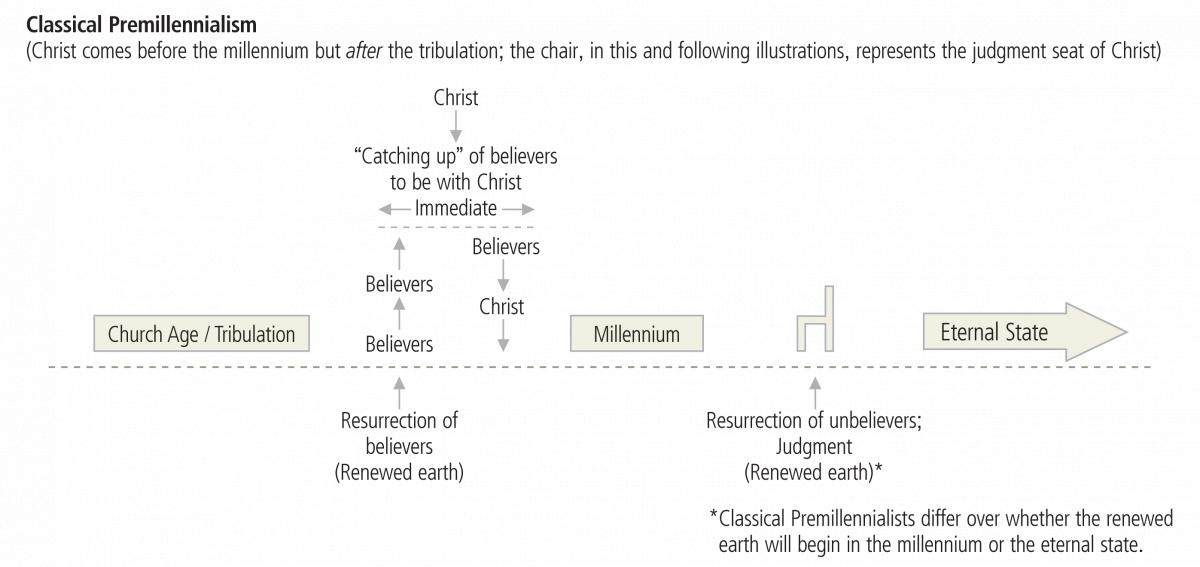
Premillennial Problems
I beli...
Here is a summary of Owen’s 17 differences between the Old Covenant and New Covenant, taken from his Hebrews 8:6 commentary. Sometimes I have retained his wording, but other times I have formatted them differently. You can find an online version of the commentary at Study Light.
There is also a great collapsible outline made by Brandon Adams at http://www.1689federalism.com/owen/demo/owen.html.
Difference 1
- These two covenants differ in the circumstance of time as to their promulgation, declaration, and establishment. The first covenant was made at the time that God brought the children of Israel out of Egypt, and took its date from the third month after their coming up from thence, Ex 19:24. From the time of what is reported in the latter place, wherein the people give their actual consent unto the terms of it, it began its formal obligation as a covenant. The New Covenant was declared and made known “in the latter days,” Heb. 1:1-2; “in the dispensation of the fullness of times,” Eph. 1:10. And it took date, as a covenant formally obliging the whole church, from the death, resurrection, ascension of Christ, and sending of the Holy Ghost.
Difference 2
- They differ in the circumstance of place as to their promulgation; which the Scripture also taketh notice of. The first was declared on mount Sinai; the manner whereof, and the station of the people in receiving the law Ex 19:18. The other was declared on mount Zion, and the law of it went forth from Jerusalem, Isa 2:3. This difference, with many remarkable instances from it, our apostle insists on, Gal 4:24-26. And it “answereth,” or “is placed in the same series, rank, and order with Jerusalem,” namely, in the opposition of the two covenants. For as the New Covenant, the covenant of promise, giving freedom and liberty, was given at Jerusalem, in the death and resurrection of Christ, with the preaching of the gospel which ensued thereon; so the old covenant, that brought the people into bondage, was given at mount Sinai in Arabia.
Difference 3
They differ in the manner of their promulgation and establishment.
- Of the Old Covenant:
- The dread and terror of the outward appearance on mount Sinai, which filled all the people, yea, Moses himself, with fear and trembling, Matt. 12:18-21; Ex. 19:16; 20:18-19. Together herewith was a spirit of fear and bondage administered unto all the people, so as that they chose to keep at a distance, and not draw nigh unto God, Deut. 5:23-27.
- That it was given by the ministry and “disposition of angels,” Acts 7:53; Gal. 3:19. Hence the people were in a sense “put in subjection unto angels,” and they had an authoritative ministry in that covenant.
- Of the New Covenant:
- The Son of God in his own person did declare it. This he “spake from heaven,” as the apostle observes; in opposition unto the giving of the law “on the earth,” Heb. 12:25. Yet did he speak on the earth also; the mystery whereof himself declares, John 3:13. And he did all things that belonged unto the establishment of this covenant in a spirit of meekness and condescension, with the highest evidence of love, grace, and compassion, encouraging and inviting the weary, the burdened, the heavy and laden to come unto him. And by his Spirit he makes his disciples to carry on the same work until the covenant was fully declared, Heb. 2:3. See John 1:17-18.
- And the whole ministry of angels, in the giving of this covenant, was merely in a...
